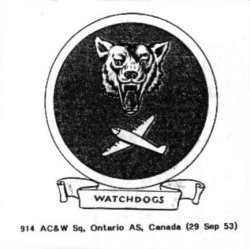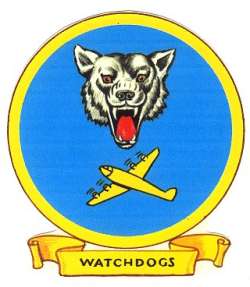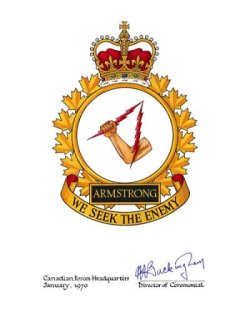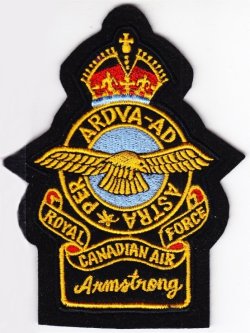NOTICE:Some photos and documents may be marked with varying degrees of classification, up to SECRET. Data so marked is the way it was delivered from official USAF sources, and have been completely declassified. To the best of our knowledge, no currently classified data is stored on this site.The following site information is available: History of Armstrong AS, ON, CNAfter the war and with the expansion of a continental air defence system, Armstrong was again selected for a radar station. This second period began as a USAF facility with construction starting in 1952 and completed in 1954. The site was originally known as Armstrong Air Station in the early 1950s and it was home to the USAF's 914th Aircraft Control & Warning Squadron which reported to the 29th and then the 30th NORAD Region at Duluth, Minnesota. The American station was handed over to the RCAF in November 1962 and renamed the site as RCAF Station Armstrong. The new radar unit, 38 AC&W Squadron, continued in the early warning role. It would later be known as 38 Radar Squadron. In March 1963, the unit was SAGE-capable. Popular by virtue of being the only radio station, CFAO began broadcasting from the trailer court on the station in the early 60's with a 10 watt transmitter. It was run by a core of 20 volunteers offering music and news to the station and surrounding area seven days a week on 1450 kilocycles. (Additional note: I was transferred to Armstrong between September 1965 and May 1967. I volunteered some time at the radio station and am somewhat familiar with the building - as I had my own trailer less than a five minute walk from the studio. What has not been mentioned is the fact that the radio station facilities were left behind by the Americans. The callsign of the American run radio station during their stint in Armstrong was a very appropriate KOLD) Armstrong had up to three deHavilland Canada Otters operating from the DOT run airfield at any one time. The Otter Flight's duties ranged from logistical support, search and rescue, to "Flying Doctor" services. The "Flying Doctor" service was offered on a weekly and monthly basis to personnel stationed at Pagwa and Sioux Lookout. Medical evacuations were carried out as necessary. Dental services were provided on a bi-monthly visit by a Royal Canadian Army Dental Corps detachment. The station became a Canadian Forces Station in September 1967. The winters were described as very cold and equally long. The station had limited recreational facilities, so hunting and fishing became quite popular, as did snowmobiling. On 1 September 1974, the main gate at CFS Armstrong was swung shut for good and CFS Armstrong was disbanded on 1 October 1974.. The airfield which is now run by the provincial government, is still as important as ever. --The NBC Group - Don Nicks, John Bradley, Chris Charland. |
    |